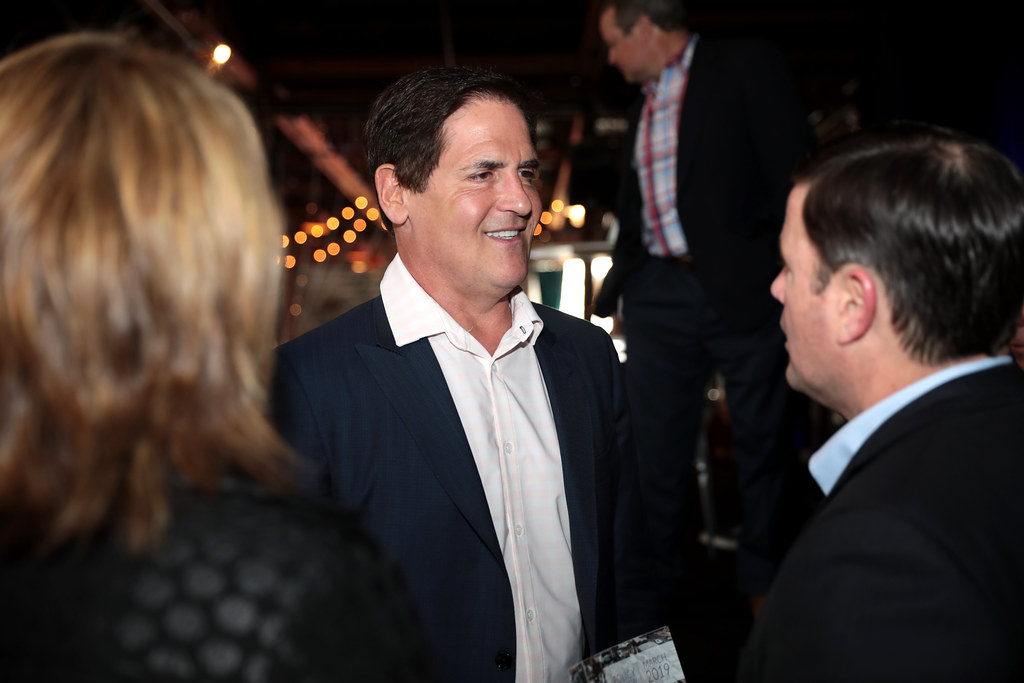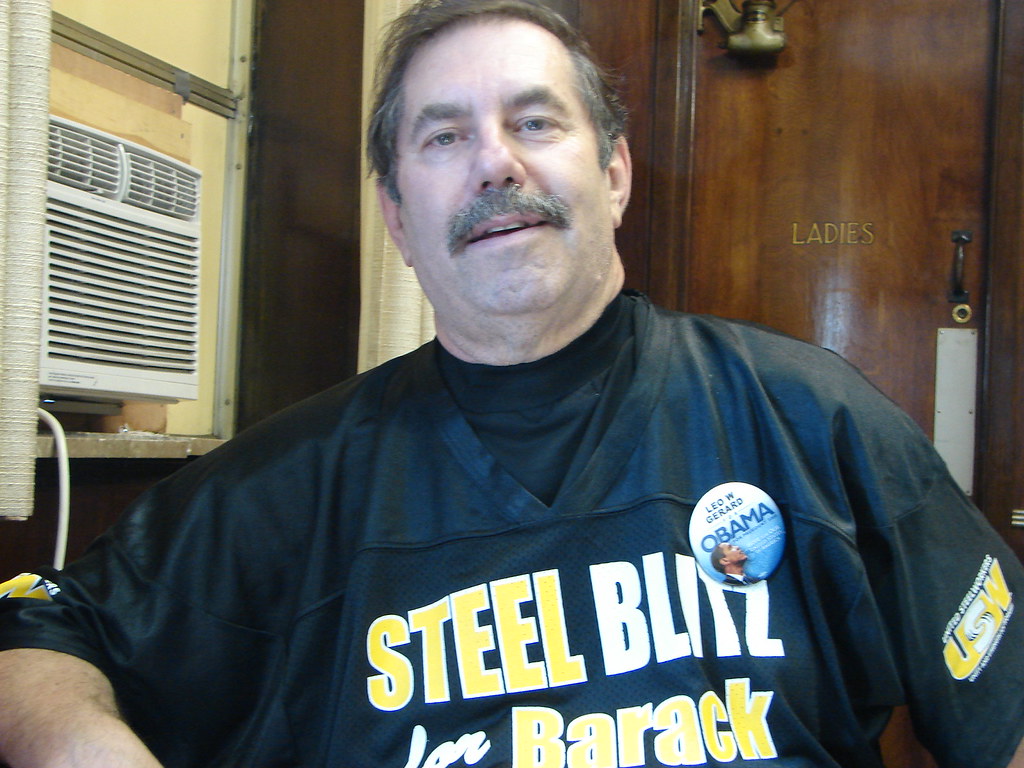
Leo Gerard, a towering figure in the North American labor movement who presided over the United Steelworkers for nearly two decades, transforming it into the continent’s largest industrial union, died on Sunday, Sept. 21, 2025, in Sudbury, Ontario. He was 78. His passing marks the end of an era defined by tenacious advocacy for working families, strategic union expansion, and an unwavering commitment to industrial strength in the face of global economic shifts.
From his humble beginnings unclogging air pipes at an Ontario nickel smelter to negotiating with titans of industry and U.S. presidents, Mr. Gerard’s journey was a testament to the power of organized labor and the impact of a dedicated leader. He skillfully navigated complex political landscapes, advocating for policies that protected domestic jobs and ensured fair trade, leaving an indelible mark on both Canadian and American industrial policy. His legacy is not only in the numerical growth of the Steelworkers but also in the innovative alliances he forged and the cultural changes he spearheaded within the union.
In his 18 years as president, from 2001 to 2019, Mr. Gerard was a relentless force, confronting the deluge of cheap steel imports that threatened thousands of jobs and reshaping the very structure of the union to meet modern challenges. His life, deeply intertwined with the cause of labor, serves as a profound narrative of dedication, strategic vision, and a steadfast belief in the collective power of workers. We now delve into the key chapters of a life that profoundly shaped the landscape of North American labor.

1. **Early Life and Union Roots**Leo Wilfred Joseph John Gerard’s journey began on March 19, 1947, in Creighton Mine, an unincorporated settlement outside Sudbury, Ontario, a town steeped in union tradition and operated by the multinational nickel mining company, Inco. Born into a union family, the ethos of collective action and worker solidarity was woven into the fabric of his childhood. His father, Wilfred Gerard, a miner himself, was an active union activist, often taking his young son with him to distribute leaflets and organize workers, planting the seeds of activism early in Leo’s life. His mother, Rita, managed the home, providing the stable foundation for this budding labor leader.
At the age of 18, Mr. Gerard followed a path common for many in his community, taking a job in a nickel plant. Initially, this was intended to be a short-term endeavor, a means to earn enough money to purchase a car. However, fate had other plans, and what began as temporary work evolved into a lifelong commitment to the labor movement. The experiences in the plant provided him with a direct understanding of the daily realities and challenges faced by industrial workers, knowledge that would later inform his leadership with profound authenticity.
While working, he pursued higher education, attending Laurentian University in Sudbury, where he studied economics. This academic pursuit, combined with his on-the-job experience, provided him with both the theoretical framework and practical understanding necessary for effective union leadership. It was during these years that his involvement in union organizing deepened, culminating in his appointment as a shop steward at his plant in 1969, marking his formal entry into the ranks of union representation.
His early life vividly illustrates the environment that shaped his convictions. The lessons learned from his father, the firsthand experience in the nickel plant, and his academic endeavors at Laurentian University collectively forged a leader who was both deeply connected to the working class and equipped with the intellectual tools to navigate complex economic and industrial issues. These formative years laid the essential groundwork for his meteoric rise and enduring impact on the labor movement.
Read more about: Lights, Camera, Conflict: 15 Iconic Actors Who Refused to Film Scenes Together on Set
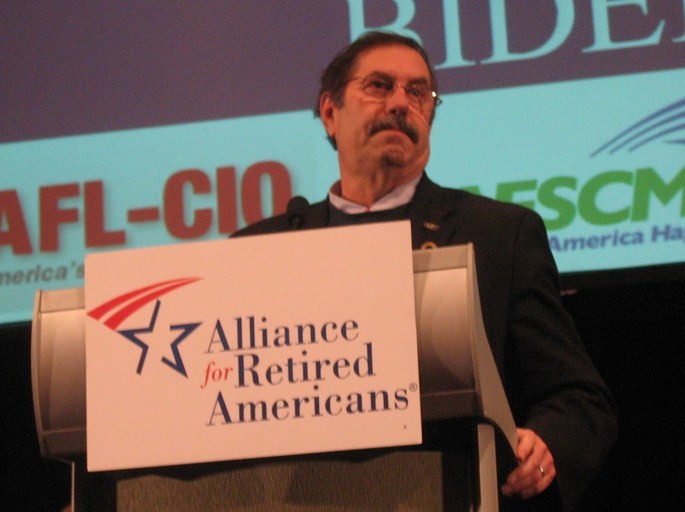
2. **The Ascent Through Union Ranks**Leo Gerard’s progression within the United Steelworkers was a steady and determined climb, marked by a series of increasingly influential roles that prepared him for the union’s highest office. After serving as a shop steward, a position that put him directly in touch with the needs and concerns of his fellow workers, he embraced a full-time role on the union staff in 1977. This decision meant leaving college just a few credits shy of his degree, a testament to his burgeoning dedication to the cause, though he would later return to complete his studies and receive an honorary doctorate from Laurentian in 1994.
His leadership qualities quickly became apparent, leading to his appointment as the union’s Ontario Director in 1985. In this capacity, Mr. Gerard oversaw significant advancements for nickel workers, notably securing improvements in their pensions. He also played a crucial role in leading a province-wide strike, demonstrating his capacity for strategic action and his willingness to stand firm for workers’ rights. Perhaps one of his most notable achievements in this period was organizing a bailout for a struggling steel maker, which resulted in the union acquiring a 60 percent ownership stake, showcasing an innovative approach to preserving jobs and industrial capacity.
Mr. Gerard continued his upward trajectory, taking on the role of the Steelworkers’ national director for Canada in 1991, following the resignation of Gerard Docquier. Just two years later, his influence expanded beyond Canadian borders when he relocated to Pittsburgh to assume the position of secretary-treasurer for the entire international union. This move placed him at the heart of the USW’s continental operations, providing him with a comprehensive understanding of the diverse challenges and opportunities facing members across North America.
The swiftness of his ascent from a factory floor to international leadership was not merely a matter of seniority but a reflection of his exceptional dedication, strategic acumen, and an undeniable ability to connect with and inspire workers. Each position he held added layers of experience and responsibility, culminating in his readiness to lead one of the most powerful industrial unions in North America. His journey through the ranks was a masterclass in committed and effective union leadership.
Read more about: Decoding Taylor Swift’s $1.6 Billion Empire: Key Pillars of Her Unprecedented Financial and Cultural Dominance
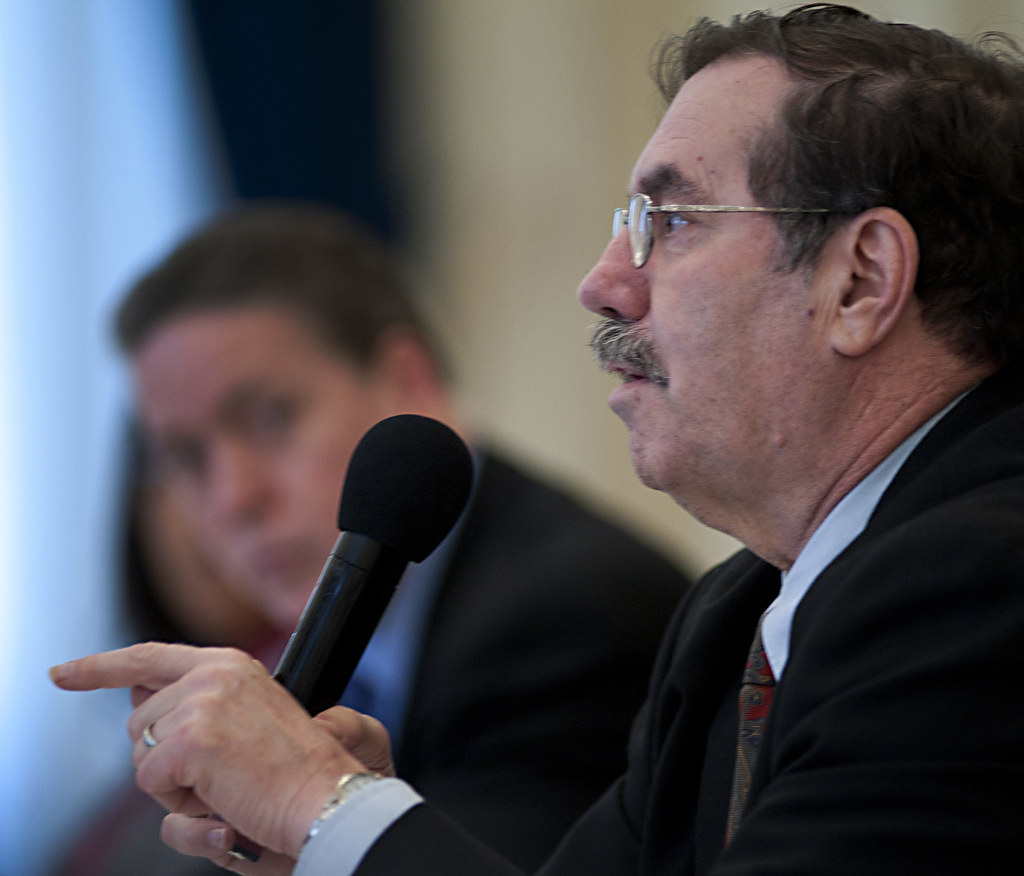
3. **The Transformative Presidency (2001-2019)**Leo Gerard’s election as International President of the United Steelworkers in 2001 marked the beginning of a truly transformative era for the union. His 18-year tenure, which lasted until his retirement in 2019, stands as the longest in the USW’s history and is widely credited with establishing it as the largest industrial union in North America. He took the helm at a particularly challenging time, as global economic forces were rapidly reshaping industrial landscapes, demanding a leader with both foresight and an unyielding commitment to workers’ rights.
Under Mr. Gerard’s stewardship, the United Steelworkers experienced unprecedented growth, not solely through traditional organizing but also through strategic mergers with other labor organizations. This aggressive expansion strategy was a cornerstone of his vision, recognizing that greater unity equated to greater power for workers. By the time he retired, the Steelworkers commanded a formidable presence, growing to represent over 1.2 million members continent-wide at its height, solidifying its position as a dominant force in the labor movement.
His presidency was characterized by a proactive and expansive approach to unionism. He understood that the challenges of the 21st century required new strategies, including building strategic alliances not just within North America but also across the globe. This era saw the USW engage more deeply with political leaders, industry titans, and international counterparts, positioning the union as a key player in debates surrounding trade, industrial policy, and social justice.
Throughout his long and impactful presidency, Mr. Gerard championed a wide array of issues fundamental to the well-being of working people. His influence extended to workplace health and safety, ensuring safer conditions for countless individuals. He fiercely advocated for gender equality and robust labor rights, striving for decent pay, secure pensions, and respect on the job. His visionary leadership transformed the USW into a more modern, diverse, and powerful institution, capable of confronting the complex challenges of a globalized economy while remaining steadfast to its core mission of worker advocacy.

4. **Defending Domestic Industry: The Fight Against Cheap Steel**One of the defining challenges of Leo Gerard’s presidency, and indeed a significant focus of his career, was the relentless fight against the influx of cheap steel imports, primarily from China. He came to office just as Chinese plants were producing vast quantities of steel, far exceeding their domestic demand, and subsequently flooding the global market. This onslaught had devastating consequences for American and Canadian steel makers, leading to dozens of bankruptcies and the loss of thousands of jobs, threatening the very foundation of the industrial sector.
Mr. Gerard recognized the existential threat this posed to the North American steel industry and its workers. He spearheaded a vigorous lobbying effort targeting the George W. Bush administration, successfully advocating for the imposition of anti-dumping tariffs in 2002. This bold move provided crucial protection for domestic producers and workers, demonstrating Mr. Gerard’s ability to influence high-level policymaking and secure tangible results for his members. His efforts were instrumental in demonstrating the need for a coordinated industrial policy that prioritized trade protections and domestic investment.
Beyond tariffs, Mr. Gerard was a key architect in forging a unified front between his union and leading American industrial companies. This collaboration, a pragmatic alliance often against traditional adversaries, aimed to create a shared voice in Washington. Among his notable initiatives was helping to establish the Alliance for American Manufacturing, a Washington-based advocacy group dedicated to pushing for precisely such a coordinated industrial policy. This alliance underscored his belief in broad-based partnerships to achieve common goals.
His constant pressure on politicians in Washington made a significant difference in shifting American politics and policymaking away from its earlier bipartisan, pro-free-trade orthodoxy. As Scott Paul, president of the Alliance for American Manufacturing, aptly noted, “It’s ironic that it took a Canadian to show Americans the need for an industrial policy.” This sentiment encapsulates Mr. Gerard’s unique position and profound influence in shaping economic policy to safeguard domestic industries and the livelihoods of industrial workers across the continent.
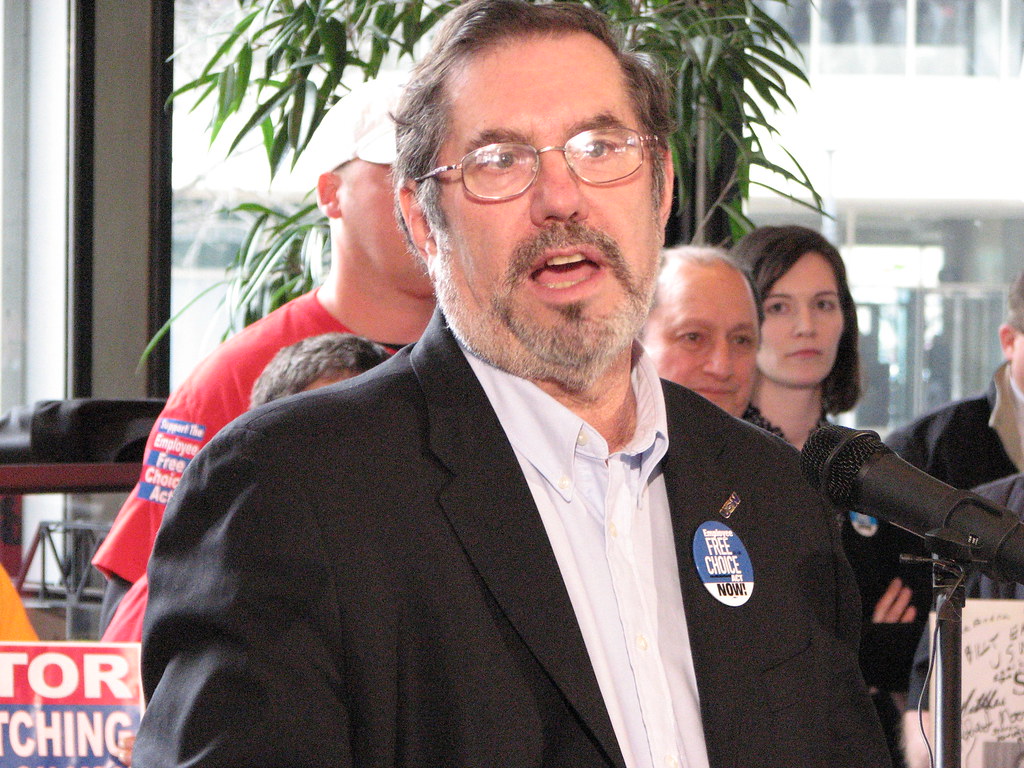
5. **Strategic Mergers and Union Expansion**Leo Gerard’s presidency was characterized by an ambitious and highly successful strategy of union expansion, primarily achieved through orchestrating mergers with other labor organizations. He firmly believed that unity was strength, and that consolidating smaller, allied unions into the United Steelworkers would amplify the collective power of workers across North America. This strategic foresight was crucial in transforming the USW into the largest industrial union on the continent.
Under his leadership, the Steelworkers absorbed several significant labor groups, dramatically increasing its membership and sectoral reach. Notable among these were the American Flint Glass Workers and the Industrial Wood and Allied Workers of Canada. These mergers brought diverse crafts and industries under the USW banner, broadening its influence and bargaining power across various economic sectors, from manufacturing to resource extraction.
The most substantial merger occurred in 2005, when Mr. Gerard oversaw the consolidation of the USW with the Paper, Allied-Industrial, Chemical and Energy Workers International Union (PACE). This pivotal event solidified the USW’s position as the largest industrial union in North America, a testament to Gerard’s vision and capacity for complex organizational integration. By bringing together these diverse groups, he created a more resilient and powerful entity capable of facing modern industrial challenges.
Canadian members also benefited significantly from Gerard’s expansionist vision. Scott Lunny, USW Director for Western Canada, specifically credited Gerard’s leadership for mergers with the Canadian chapter of the International Woodworkers of America (IWA) and later the Telecommunications Workers Union. These decisions, according to Lunny, “transformed our union’s presence and power in Western Canada,” building “lasting strength for generations of workers.” These strategic maneuvers were not merely about growth but about ensuring the long-term viability and influence of organized labor in a rapidly changing global economy.
Read more about: Beyond the Hull: Decoding the U.S. Navy’s Path Forward – A Deep Dive into Admiral Caudle’s Vision and the ‘USS’ Legacy

6. **Championing International Labor Solidarity**Beyond North American borders, Leo Gerard was a fervent advocate for international labor solidarity, recognizing that the challenges faced by workers in one country often mirrored those elsewhere in an increasingly globalized economy. He understood that capital operated without national boundaries, and therefore, labor needed to transcend them as well to effectively represent and protect its members. This commitment led him to forge deep and lasting ties with unions across the globe.
Mr. Gerard actively built relationships and alliances with labor organizations in various regions, including Mexico, Brazil, Australia, Britain, Europe, and South America. These international connections were not mere diplomatic gestures but were intended to create a unified front against multinational corporations and to share best practices in worker advocacy, safety, and rights. He believed that by working together, unions could exert greater pressure on global supply chains and ensure fairer conditions for workers everywhere.
Perhaps the most significant embodiment of his commitment to international solidarity was his instrumental role in the formation of the IndustriALL Global Union. This ambitious initiative brought together unions representing a staggering 50 million workers across 140 countries, spanning critical sectors such as mining, energy, and manufacturing. The creation of IndustriALL Global Union was a monumental achievement, establishing a powerful platform for coordinated global labor action and advocacy.
Through these international endeavors, Mr. Gerard demonstrated a forward-thinking perspective on the future of organized labor. He understood that protecting domestic jobs and ensuring fair wages often required engagement on a global scale. His efforts cemented the United Steelworkers’ position not just as a national power, but as a significant player in the broader international labor movement, inspiring countless other workers to carry on the fight for justice and fairness across continents.
Read more about: From Set to Soulmates: 15 Co-Stars Who Proved Hollywood Friendships Are *Actually* Real!
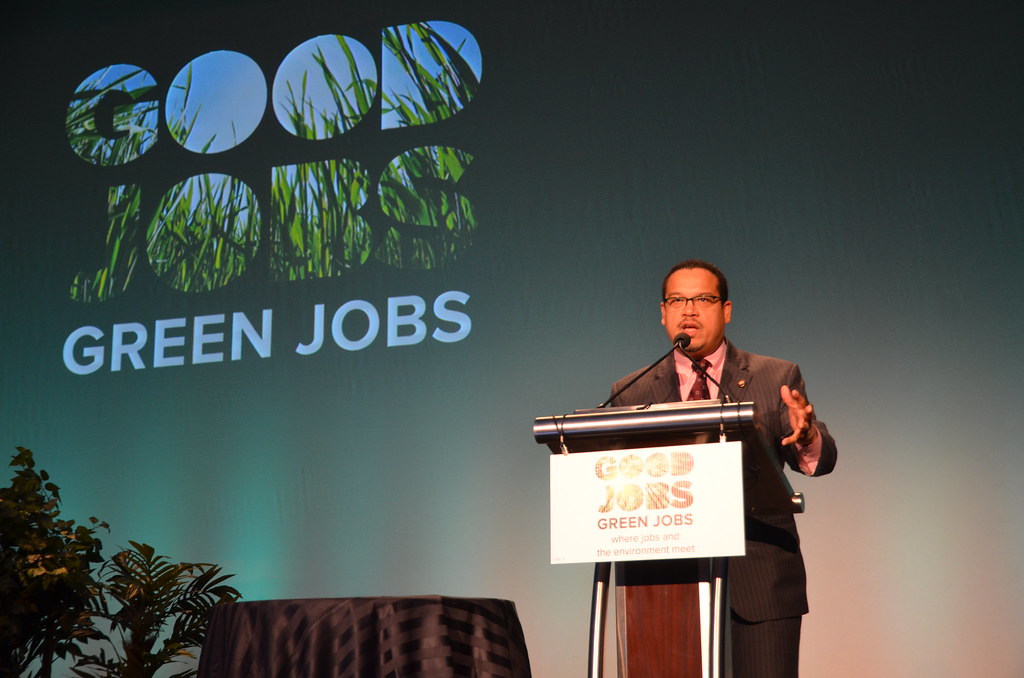
7. **Forging Innovative Partnerships: The BlueGreen Alliance**Leo Gerard’s leadership extended beyond traditional labor advocacy, recognizing the need for novel alliances to address multifaceted challenges. In a particularly visionary move in 2006, Mr. Gerard spearheaded the creation of the BlueGreen Alliance, a groundbreaking partnership that united the United Steelworkers with the Sierra Club. This collaboration marked a significant departure from historical tensions between labor and environmental groups, demonstrating Gerard’s capacity to identify shared objectives where others saw only conflict.
The BlueGreen Alliance was conceived to bridge the divide between economic development and environmental protection. Its core mission was to advocate for policies that simultaneously created good jobs and promoted cleaner manufacturing practices, thus fostering a sustainable economy. This innovative approach acknowledged that industrial workers and environmentalists could find common ground in pushing for robust domestic industries that adhered to higher ecological standards, rather than simply accepting job losses in the name of environmentalism or environmental degradation for the sake of jobs.
Under Gerard’s influence, the alliance became a powerful voice pushing for a coordinated industrial policy that integrated environmental responsibility with economic vitality. It underscored his belief that the future of the working class was inextricably linked to the health of the planet and that a holistic approach was essential. This partnership exemplified Gerard’s strategic thinking, transforming potential adversaries into allies for a shared progressive agenda, and showcasing his ability to adapt the labor movement to emerging societal concerns.
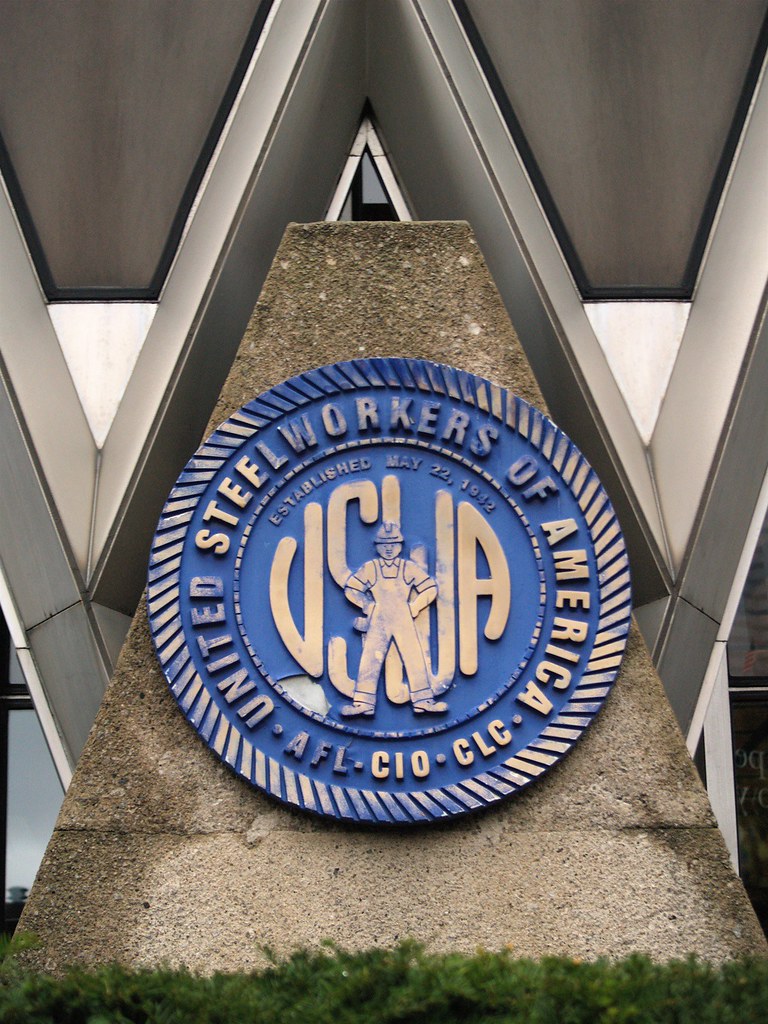
8. **Internal Reforms and a Vision for Diversity**Beyond outward expansion and strategic alliances, Leo Gerard recognized that the strength and future relevance of the United Steelworkers depended significantly on internal reform and a commitment to diversity. He took decisive steps to modernize the union’s leadership, reflecting his conviction that a more inclusive and representative structure was vital for addressing the evolving needs of the workforce. This internal transformation was as critical as any external merger in securing the union’s long-term viability.
Mr. Gerard consciously worked to open the doors of leadership to a broader demographic, moving beyond what had historically been a predominantly white male leadership. He actively encouraged and, at times, orchestrated the early retirement of older, established leaders, thereby creating pathways for new voices and perspectives. This strategic shift was driven by his firm belief that women and immigrants were not just new members, but critical components for the future growth and dynamism of organized labor.
His commitment to gender equality and broader representation was a testament to his progressive vision. By embracing diversity, Gerard aimed to ensure that the United Steelworkers remained reflective of its increasingly varied membership and equipped to tackle complex societal issues. This proactive stance helped to cultivate a more inclusive environment within the union, empowering new generations of leaders and strengthening the USW’s ability to advocate for all working people, irrespective of their background.
Read more about: Understanding the United States: A Comprehensive Look at Its History, Geography, and Governance
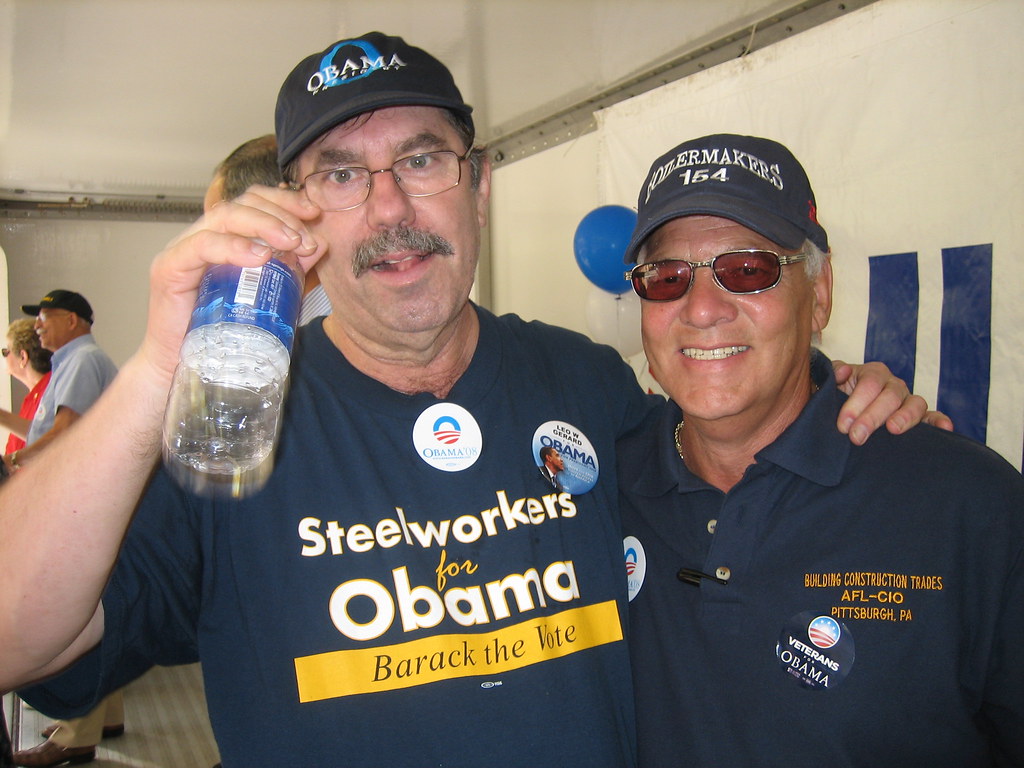
9. **Strategic Political Engagement and Policy Influence**Leo Gerard’s impact on North American labor was also deeply rooted in his astute and often tenacious political engagement. He skillfully navigated the complex corridors of power in Washington and Ottawa, demonstrating a willingness to work with—and, when necessary, against—both political parties to advance the interests of his members. His approach was pragmatic, prioritizing tangible results for workers over strict ideological alignment.
His “constant pressure on politicians in Washington” played a significant role in shifting American politics and policymaking away from a previously dominant bipartisan, pro-free-trade orthodoxy. Mr. Gerard understood that securing domestic jobs and maintaining industrial strength required direct engagement in policy debates, often challenging established economic doctrines. His testimony to the U.S. Senate Committee on Health, Education, Labor and Pensions in 2002 exemplifies his direct participation in shaping national discourse.
Far from being a mere demonstrator of outrage, as he once noted to The Toronto Star in 1994, Gerard preferred to “get inside the buildings, into the debate.” This philosophy underscored his belief in influencing policy from within, rather than solely from outside. His strategic advocacy, particularly in the fight against cheap steel imports and the push for a coordinated industrial policy, showcased his profound influence on economic decisions that had a direct bearing on the livelihoods of hundreds of thousands of workers.
Read more about: Beyond the Stage: 11 Pivotal 1970s Moments That Forged the Future We Know Today
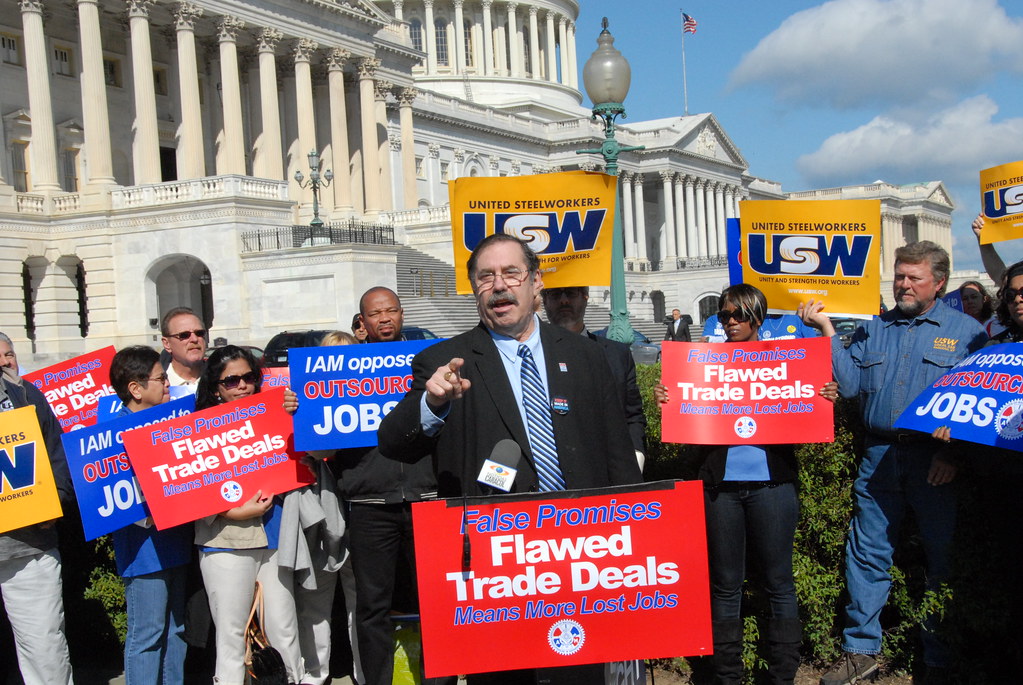
10. **A Leader’s Personal Philosophy and Blue-Collar Authenticity**Throughout his remarkable career, Leo Gerard remained deeply connected to his blue-collar roots, a connection that profoundly shaped his personal philosophy and leadership style. Despite negotiating with titans of industry and U.S. presidents, he never forgot where he came from, insisting on his working-class identity. This authenticity was a cornerstone of his appeal and effectiveness, making him relatable to the countless workers he represented.
His office wall at the Steelworkers’ headquarters in Pittsburgh prominently featured a photo of a younger Gerard being pressed against a car by a police officer during a labor protest. This visual reminder symbolized his lifelong commitment to activism and his willingness to stand on the front lines for workers’ rights. It was a powerful testament to his unwavering dedication and reflected a philosophy that prioritized collective action and defiance against injustice.
In a 2001 interview with The Wall Street Journal, Gerard famously stated, “I’m not the sharpest pencil in the box. But my job is to stand in front of the workers. I was born into a union family, this is all I know.” This self-effacing remark, while modest, perfectly encapsulated his dedication and his core belief that his role was to be the voice and shield for his members. His genuine demeanor, combined with a “powerful speaker” and “determined fighter” persona, as described by Sudbury NDP MPP Jamie West, allowed him to galvanize activists and inspire deep loyalty. He was known to “curse like a sailor,” a trait that further cemented his approachable and unpretentious image, constantly reminding everyone of his primary mission: “to make life better for the working class.”

11. **National Acclaim: Companion of the Order of Canada**Leo Gerard’s extensive contributions to labor and social justice were not only recognized within the union movement but also at the highest levels of his home country. In 2023, Canada bestowed upon him its highest civilian honor, appointing him a Companion of the Order of Canada. This prestigious award is reserved for individuals who have demonstrated “outstanding achievement and merit of the highest degree, especially in service to Canada or to humanity at large,” underscoring the profound national significance of his life’s work.
Receiving the Companion of the Order of Canada placed Mr. Gerard among the most distinguished Canadians, a testament to his enduring impact far beyond the industrial sector. It acknowledged his unwavering dedication to improving the lives of working families, his strategic vision in expanding the Steelworkers, and his relentless advocacy for fair trade and social justice across national borders. This honor cemented his place not just as a labor leader, but as a national hero whose efforts had broad societal benefit.
It is noteworthy that Gerard was only the second Canadian to ever reach the pinnacle of the Steelworkers union’s leadership, following in the footsteps of his esteemed mentor, Lynn Williams, who served as International President from 1983 to 1994 and was himself appointed an Officer of the Order of Canada in 2005. This lineage highlights the rare distinction of Gerard’s achievement and his profound influence as a Canadian advocating for workers on a global stage, further burnishing his legacy as a leader of exceptional caliber and widespread recognition.
Read more about: The Infinite Adventures of a Phenomenon: Inside the Enduring Legacy of Adult Swim’s Rick and Morty

12. **A Lasting Legacy: Continuing the Fight for Justice**Leo Gerard’s passing leaves behind an immeasurable legacy, profoundly shaping the landscape of the North American and global labor movements. His 18-year tenure as president of the United Steelworkers marked “the end of an era defined by tenacious advocacy for working families,” as noted by the union, but his impact extends far beyond his physical presence. His vision of unity, strategic growth, and unwavering commitment to workers’ rights continues to resonate throughout the organization and among those he inspired.
His influence is clearly articulated by current USW International President David McCall, who stated, “Leo Gerard spent his entire life fighting for workers across the world, and his impact on the USW, and the global labor movement, has been immeasurable. He inspired countless other workers to carry on the fight for justice and fairness. He will be missed, but we intend to honour his legacy by continuing that work.” This sentiment is echoed by USW Canadian National Director Marty Warren, who praised Gerard as a “visionary leader, determined and fearless in taking on corporations and lawmakers alike,” affirming that “his life’s work will live on for generations.”
From building lasting strength in Western Canada through strategic mergers, as recognized by Scott Lunny, to understanding the unique francophone identity of the union in Quebec, as highlighted by Nicolas Lapierre, Gerard fostered a union that was both expansive and deeply attentive to its diverse membership. Kevon Stewart, Director of USW District 6, succinctly captured Gerard’s essence, noting, “Leo reminded us that the labour movement must always rise to meet the moment – and our union is stronger today because of his vision and courage. Rest in power, Brother Leo. Your fight lives on in all of us.”
Read more about: Joseph McNeil’s Enduring Legacy: How a Spark in Greensboro Ignited the Civil Rights Movement
As his family grieves privately, honoring his memory, they have invited people to make a donation in Gerard’s honor to the Alzheimer’s Society. This personal request serves as a poignant reminder of the man behind the monumental labor leader, and a call for continued engagement in causes that reflect his spirit of care and community. His legacy is not merely a collection of achievements, but a living testament to the enduring power of collective action and a perpetual source of inspiration for those who continue to champion justice and fairness for all workers.


